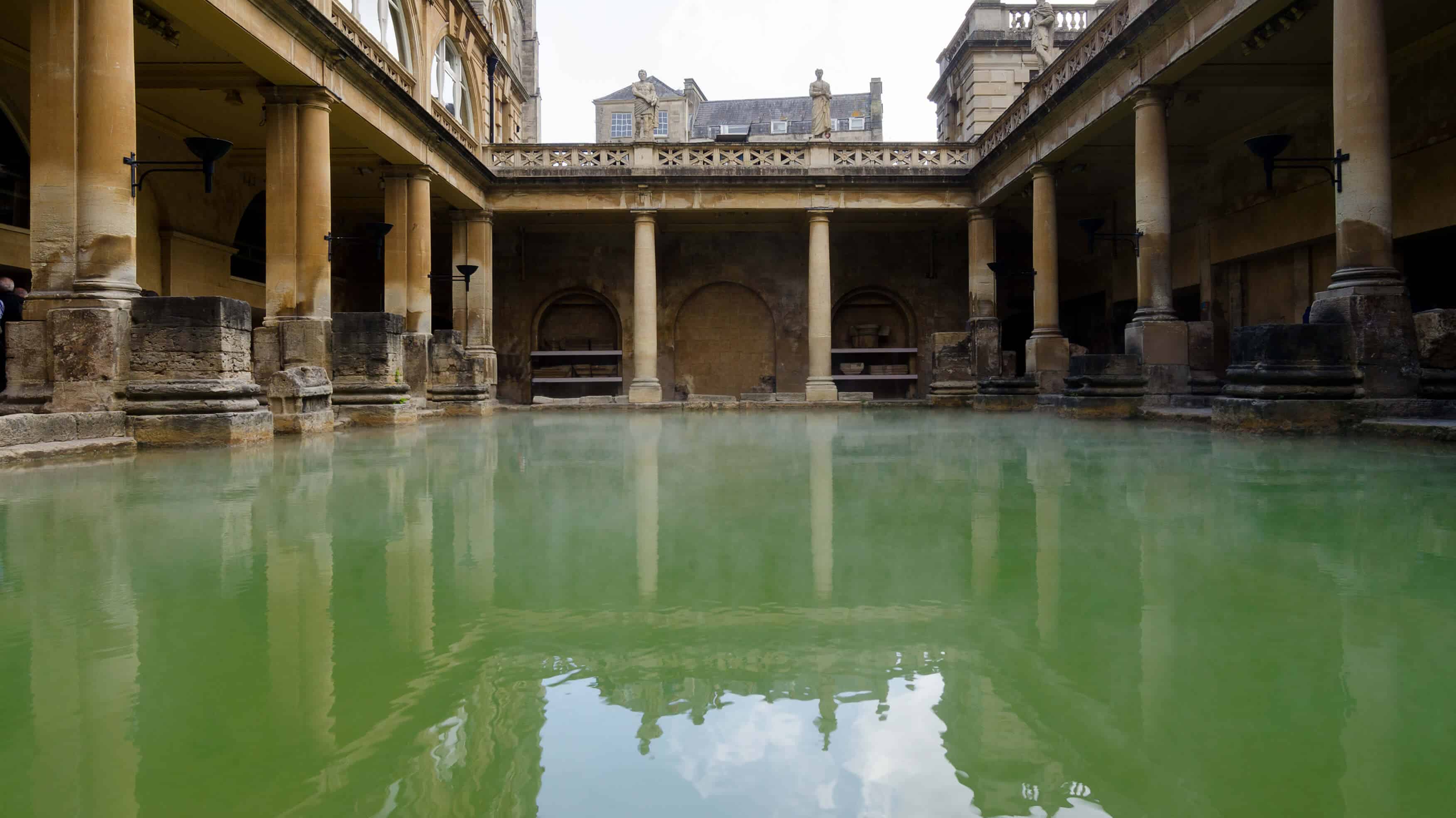Table Of Content

They were but on the ancient city of Ancyra which was the capital of the Roman province of Galatia. The complex was built at a monumental scale because Carthage was one of the most important trading hubs in the Mediterranean. By the third century A.D., Carthage was one of the biggest cities in the Roman Empire with hundreds of thousands of inhabitants. The baths were constructed during the reign of Antoninus Pius between 145 and 162 A.D., not too far from the presidential palace of Tunisia today.
Baths of Antoninus – Tunis, Tunisia
In addition to public baths, wealthy citizens often had their own private baths constructed as a part of their villa and baths were even constructed for the legions of the Roman army when on campaign. However, it was in the large cities that these bath complexes (balnea or thermae) took on monumental proportions with vast colonnades and wide-spanning arches and domes. Baths were built using millions of fireproof terracotta bricks and the finished buildings were usually sumptuous affairs with fine mosaic floors, marble-covered walls, and decorative statues.
Baths of Diocletian – Rome, Italy
One of the main reasons why the baths were used is that cleanliness was understood to be a universal necessity. Even though the thermae were public works funded by the state, they still incurred an entrance fee; thankfully the cost was relatively cheap, often no more than a single day’s wage for a free Roman male. The thermae played a crucial role in architecture as their design requirements necessitated development of the dome. The earliest surviving record that we have of a dome was found within the frigidarium of the Stabian Baths at Pompeii and is dated around 2 BCE. The combination of dome-based technologies like stiff mortared rubble and iron tie bars proved such a popular building asset that it would be worked into other public buildings, especially ones built on a large scale like a basilica. The decline and eventual collapse of the Western Roman Empire resulted in an inevitable breakdown of the infrastructure needed to keep bathhouses operational.
Roman Baths – Bath, England

"I'm sorry, ma'am. There are no phones or photos allowed in the bath space," he said. When I got past Aire's Tribeca lobby—under the soaring ceilings of a restored textile factory from 1883—I was handed a bath robe and aqua shoes. I took a quick shower, stored my belongings in a locker, and padded out of the women's room to the top of the staircase that lead down to the baths.
The so-called Pompeiian bath type eventually spread throughout Italy and into the western part of the Roman empire. Previously separated male and female areas were frequently removed, and emphasis was placed on ensuring aesthetic views from the Caldarium’s windows. The Roman Baths are well-preserved thermae in the city of Bath, Somerset, England. A temple was constructed on the site between 60 and 70 AD in the first few decades of Roman Britain.
The city was part of the Roman province of Moesia and the bathing facility was constructed near the end of the 2nd century. Unlike many other structures, they were only in use for about a century and already fell into ruin in the late 3rd century. What are the odds that the city of Bath in Somerset, England, was named after the Roman Baths that are located here, right? Well, it was, and this ancient Roman bathing facility has been remarkably well-preserved as well. During this period, the largest ancient Roman bathhouses were completed, capable of holding approximately 3,000 bathers at any given time.
It’s nearly impossible to use your phone when enjoying them (and often not allowed). Next time you’re in need of a digital detox and some relaxation time, seek out one of these urban sanctuaries. Roman baths, ruined abbeys and the oldest residential street in England are all found within the pretty county of Somerset. For those driving, Bath is along the A4 and A36 roads, a 40 minute drive from Bristol and 2 and a half hours via the M4 from London.
These basins are of marble in the Old Baths, but we hear of alvei of solid silver.[22] Because of the great heat of the room, the caldarium was but slightly ornamented. From the apodyterium the bather who wished to go through the warm bath and sweating process entered the tepidarium (D). In the baths at Pompeii this chamber also served as an apodyterium for those who took the warm bath. The walls feature a number of separate compartments or recesses for receiving the garments when taken off. The compartments are divided from each other by figures of the kind called atlantes or telamones, which project from the walls and support a rich cornice above them in a wide arch. Moreover, the therapeutic and medicinal aspects of Roman baths left a lasting legacy.
Uncovering Roman Carlisle returns for a “Mini-Dig” this month - Cumberland Council
Uncovering Roman Carlisle returns for a “Mini-Dig” this month.
Posted: Tue, 24 Oct 2023 07:00:00 GMT [source]
Let them feel the stones beneath their feet as they walk in the shadows of the Romans who once bathed in the Great Bath, while costumed characters immerse you all into Roman life. Younger children will love following Hoot the Owl on our activity trails, while those a little older will be fascinated and entertained by our free audioguide designed just for children and read by the wonderful Michael Rosen. A hand held British Sign Language guide and a special audioguide with enhanced audio description for people with visual impairment are freely available. Except this time, I'll be ready to ditch the phone and tune out the world as soon as I hit the tub. Licensed clinical psychologist Chloe Carmichael, PhD, also says that she's seen doctors request that many of her patients be bathed or showered to reset their mental perspective. I wondered if my team of writers and editors had published a timely story about a celebrity baby.
The site showcases well-preserved Roman bathing facilities, including the Great Bath, intricate mosaic floors, and the original Roman temple dedicated to the goddess Sulis Minerva. Ongoing conservation efforts, such as the restoration of the Roman Temple courtyard, ensure that visitors can continue to appreciate the magnificence of these ancient baths [6]. This central area housed the main hot baths and was the focal point of the bathing experience. The caldarium featured pools or large basins of hot water, often supplemented by steam rooms or sudatoria [3].
At the Six Senses Rome, Ancient Spa Tradition Meets Cutting-Edge Design - Vogue
At the Six Senses Rome, Ancient Spa Tradition Meets Cutting-Edge Design.
Posted: Mon, 12 Jun 2023 07:00:00 GMT [source]
Just like the Baths of Caracalla, they were operational until the aqueducts that supplied these structures were destroyed in 537 A.D. The traditional long axis of rooms was instead replaced by a domestic style layout dominated by a large hall and bathing lounge. Hot bathing areas were predominantly represented by a series of individual small rooms designed for travelers. The public bath house was the place where people went to socialise and do business as well as getting clean.
During much of the 20th century people occasionally swam in the Great Bath, but bathing there was closed to the public after 1978, when a bather died from an amoeba-borne illness that she contracted from the water. The Roman Baths were a factor in Bath’s being inscribed as a UNESCO World Heritage site in 1987. According to an embellished legend based on a story told by Geoffrey of Monmouth, it was King Lear’s father, Bladud, who inadvertently discovered the healing properties of the hot springs. Packed off to tend pigs on his own because he had contracted leprosy, he saw that his charges loved wallowing in the water, tried it himself, and was cured. The first baths seem to have lacked a high degree of planning and were often unsightly assemblages of diverse structures.
With amphitheatres, mosaics, forts, and bath houses to explore, this guide will walk you through what remains of one of history's most famous Empires. Visitors can tour the facilities and museum but the water is off-limits after a young woman died from complications of meningitis in 1978. Investigations into the cause of death revealed that the water was a natural environment for Naegleria fowleri, a brain-eating amoeba. Anyone longing to experience something close to what the thermae experience was like can visit the nearby Thermae Bath Spa or Cross Bath locales. The walls of the baths could also generate heat by incorporating “tubuli,” hollow tubes that were shaped into rectangles and served as channels for the hot air generates by the prafurniae. Tegulae mammatae were special bricks that contained bosses along one side, allowing for greater insulation of a room by trapping the hot air.

No comments:
Post a Comment